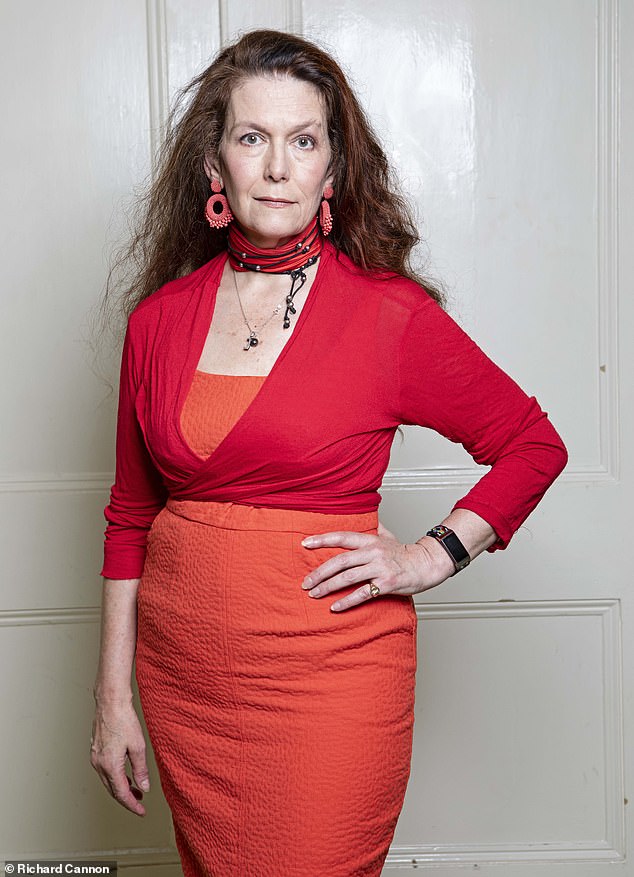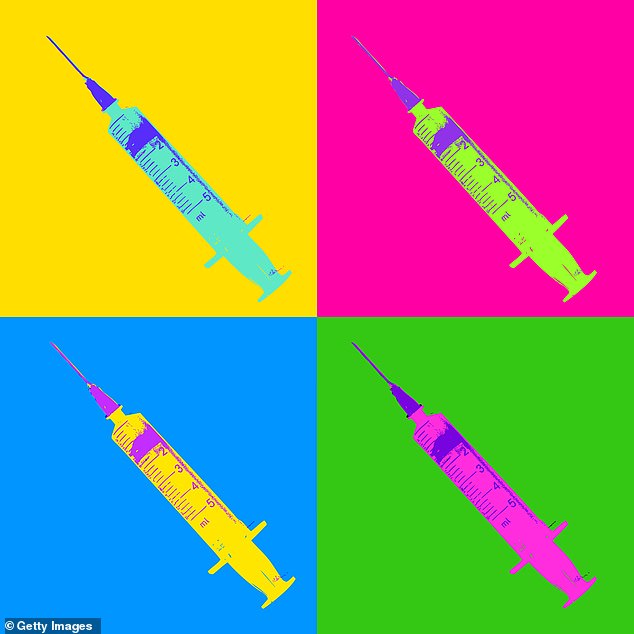As low uptake of jabs leads to measles outbreak… I’m proof you’re never too old to need the MMR
The first thing I have to say is that at 64 I am fit and healthy. Fortunately, that turned out to be the case.
It started on a Tuesday in early August. I had worked hard all day as a digital consultant and when I came home exhausted, I went straight to bed.
The next morning I was coughing and feeling miserable with a temperature of 38 degrees Celsius. I had lost my sense of taste and smell, but tested negative for Covid. The next day my temperature was higher and could hardly be controlled with paracetamol.
On Friday it was 39 degrees Celsius. I was wracked with the worst cough I have ever experienced, and sneezed again and again. I called 911, who told me to take paracetamol after asking some completely irrelevant questions, such as: was I bleeding?
I became more and more scared as I wheezed for the first time in decades. So I stumbled to the doctor. Not a doctor who knows me, but a young man who asked no useful questions, had no idea whatsoever and sent me home with the same useless advice about paracetamol as NHS 111. I explained that I had never felt so ill, but my the symptoms were dismissed as ‘just a virus’ and I felt like I was worrying about nothing.
Cue the weekend from hell. My temperature rose to 40 degrees Celsius on Sunday – very high for an adult. I had long since stopped eating; even drinking water was difficult because the inside of my mouth and throat were very sore, bright red and peeling.
The Daily Mail reported in May 2023 about the dangerously low uptake of the MMR vaccine: in Hackney, for example, only 60 percent of five-year-olds had both doses (file image)

The first thing I have to say is that at 64 I am fit and healthy. Fortunately, that turned out to be the case. In the photo: Josa Keyes
I called 911 again. Same standard questions about heart attacks and strokes, but at least I got a doctor’s appointment for Monday.
Small scary purple pinpricks had appeared all over my chest and cheeks. With meningitis in mind, I pressed a champagne glass against them, but I couldn’t tell if they were turning white or not. By then I wasn’t thinking clearly and was falling in and out of sleep.
On Monday I found a mask left over from the lockdown. Not knowing what was wrong with me, I tried to stay away from people. All I wanted to do was lie down on the cool floor, but sheer force of will kept me standing.
I saw another unknown GP, who was not concerned even though I showed him my results. But I found the strength to insist that he refer me to the hospital, then staggered out and booked an Uber to the emergency room.
After about an hour a nurse had me lie down in a side room – my temperature dropped to 40 degrees Celsius and they immediately put me on a drip because I was so dehydrated.
One of the first questions they asked me was: have you been vaccinated against measles? I knew this was not the case, as my brother (four years younger than me) was vaccinated in 1970 at the age of eight, but for unknown reasons I did not.
My condition kept getting worse. By now my nose and red eyes were filled with what felt like hot gravel.
The purple pinpricks on my chest and face grew into a hot, red rash that crawled down my body. My oxygen level was down to 89 percent (normal is 95 and above), so they tried to give me a nasal cannula. With the gravel up there it was a pain so I ripped it out. The oxygen mask was only marginally more comfortable on my sore face.
Three days passed and no one seemed to know what was wrong with me; all blood tests and chest x-rays were negative.
My three children put on a brave face, but were very scared. My oldest son took four days off work and came over in the morning and evening. My daughter left her toddler and came to sit with me and read ghost stories to me.
At one point I woke up to see a doctor standing next to me who said they were doing everything they could to diagnose it, and that they would put me in intensive care if things didn’t improve.
There was a terrifying moment when I laid my head back and choked as my swollen throat closed and I couldn’t breathe. I coughed myself back to life.
Then finally, five days after I was admitted, I was just starting to feel a small positive change for the better when I was diagnosed.
The measles.
During a recent check-up at the hospital, the doctor told me that it can take so long to diagnose measles because the samples have to be sent to a reference laboratory. Measles has become so rare that few people have seen it or can now identify it.
After that first question when I was admitted, there was still no measles. Unlike Weil’s disease (they asked me repeatedly if I had been swimming in a stagnant pond – contracted from rat urine) or hives, or some terrifying autoimmune disease.

Finally, five days after being admitted, I was just starting to feel a small positive change for the better when the diagnosis was made. Measles (file image)
Until Andrew Wakefield’s completely discredited 1998 report linking the MMR vaccine to autism, herd immunity was high and I was relatively safe even though I was unvaccinated.
Fortunately, my children and my two grandchildren had had their MMR. I have always been very pro-vaccination, but it never occurred to me to get it myself.
But thanks to Wakefield, the damage to herd immunity and lack of public confidence in vaccination has accelerated. As we know, it transitioned into Covid-19, with more than 1.5 million adults in Britain refusing to get the vaccine.
The Daily Mail reported in May 2023 on the dangerously low uptake of the MMR vaccine: in Hackney, for example, only 60 percent of five-year-olds had both doses.
Measles is one of the most contagious diseases in the world. In July, Public Health England had declared an outbreak in London, where I contracted the disease.
If I had known about the outbreak, I would have asked for the MMR shot. After my experience, at least one friend has already had the shot.
Because without the MMR you run the risk of infecting a pregnant woman with rubella and endangering her baby. Boys can become infertile if they get mumps at the wrong time. And measles can lead to serious complications, especially in children. Since the vaccine was introduced, 4,500 deaths have been prevented in Britain.
I hope I’m doing well, even though there may be long-lasting consequences.
Three weeks after I was discharged, the doctor warned me about post-viral fatigue. It will be a while before I go to a party, work all day or regularly run 5km like I used to.
Regardless of your age, check your data and your memory. If you have even the slightest doubt about whether you have had the vaccine or not, I would book an MMR.
Spread the word and take us back to the target of 95 per cent vaccine coverage for herd immunity across Britain. You help prevent people of all ages from becoming seriously ill – and you can save children’s lives.
